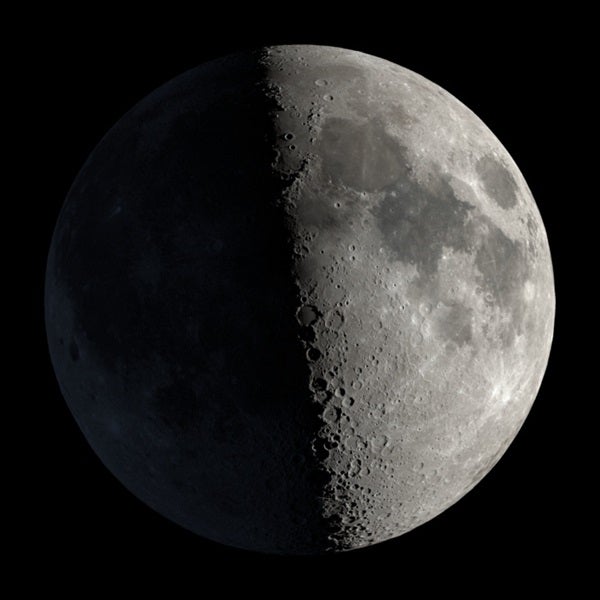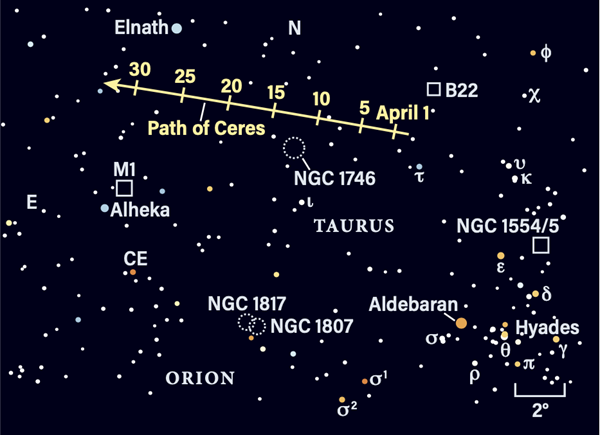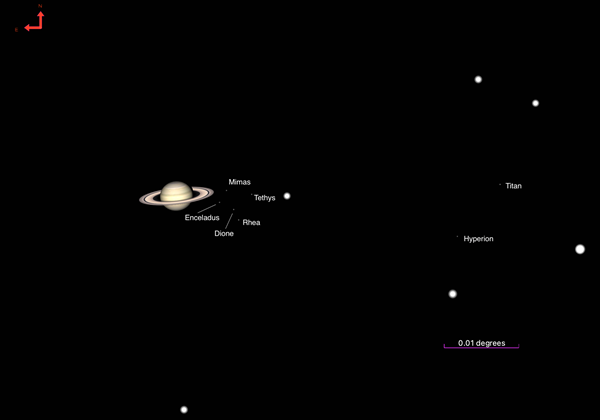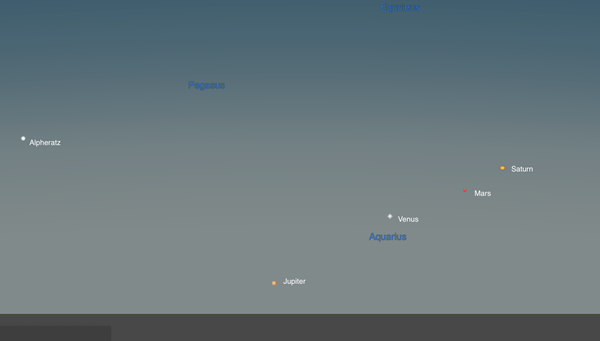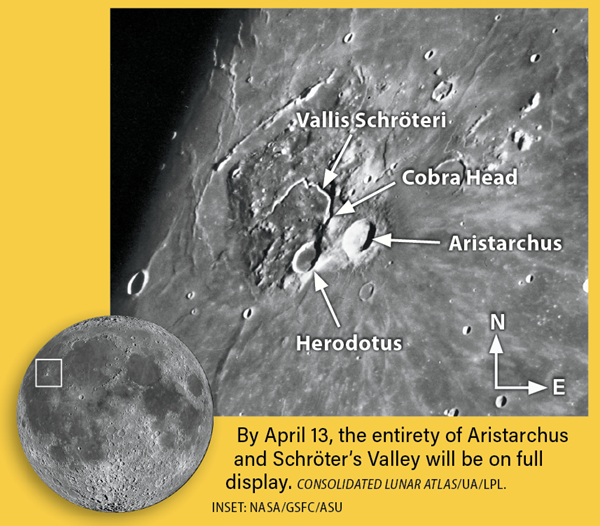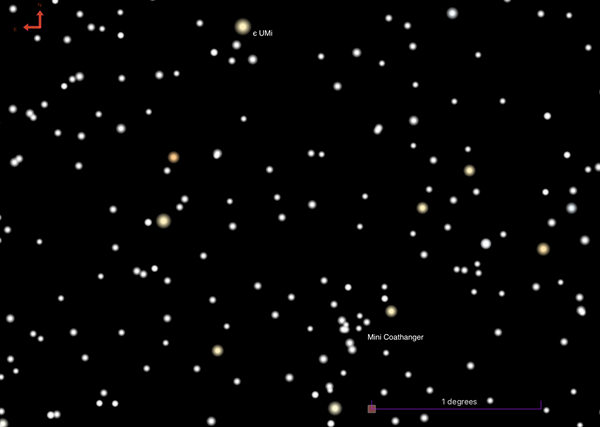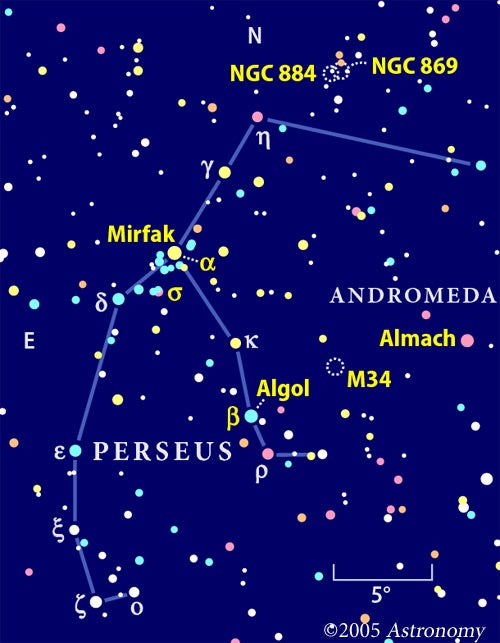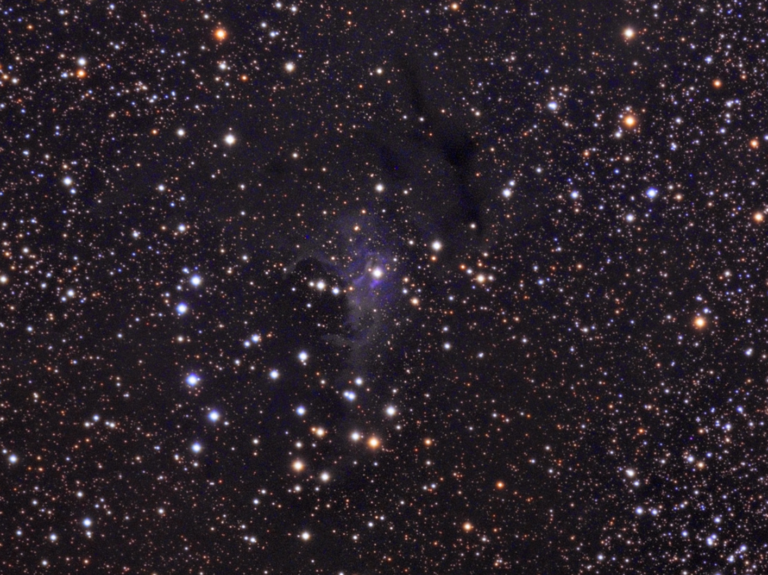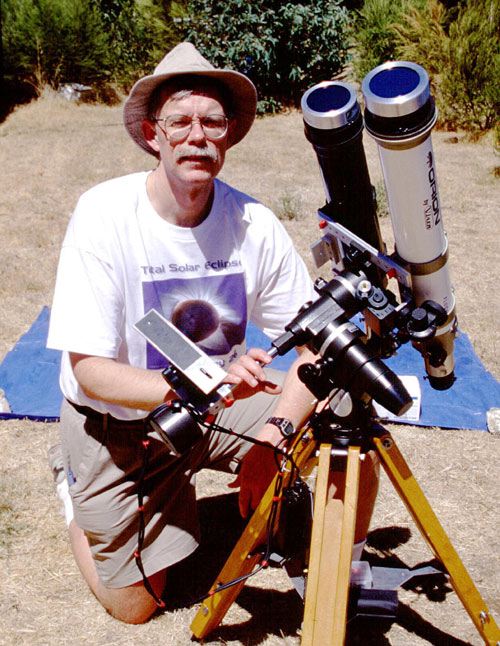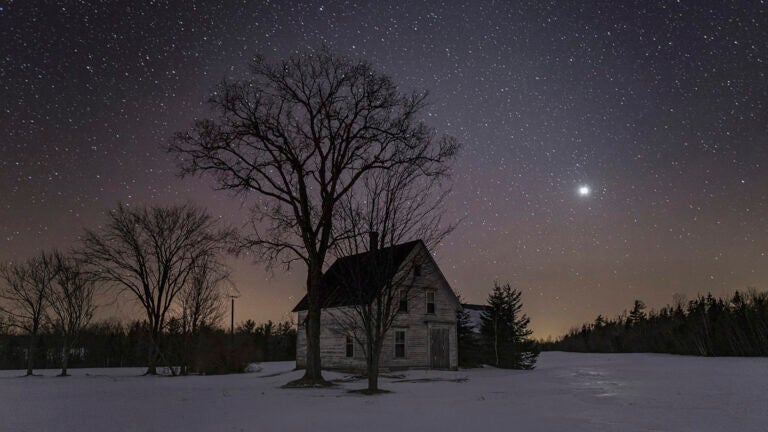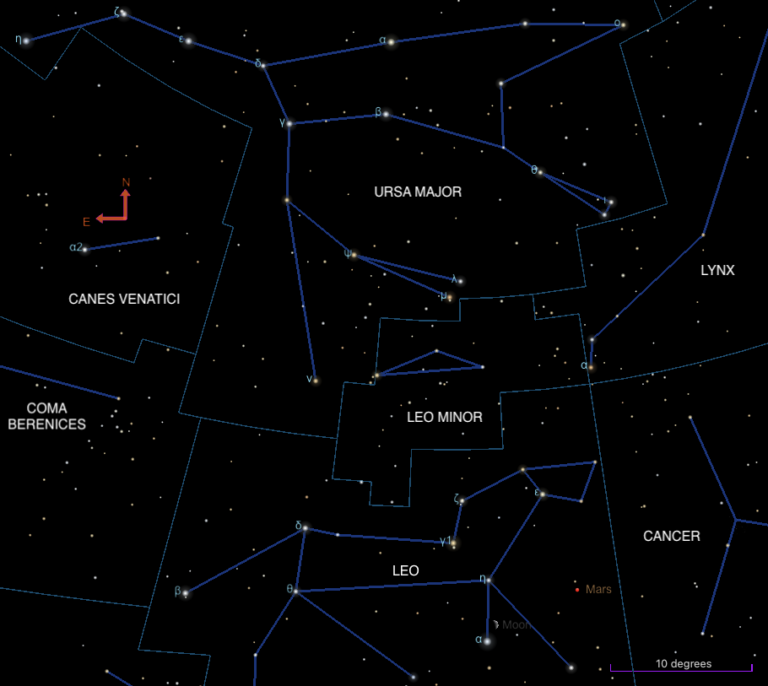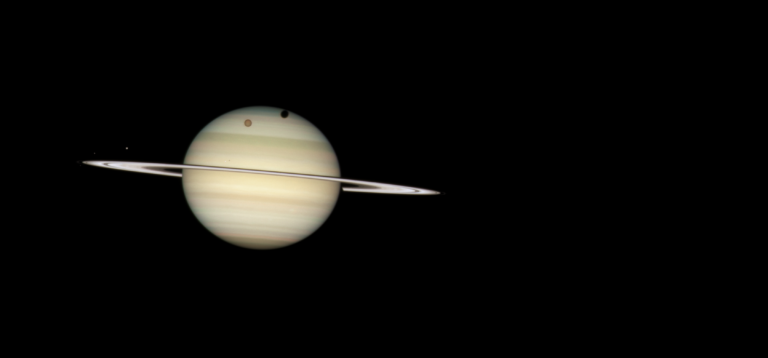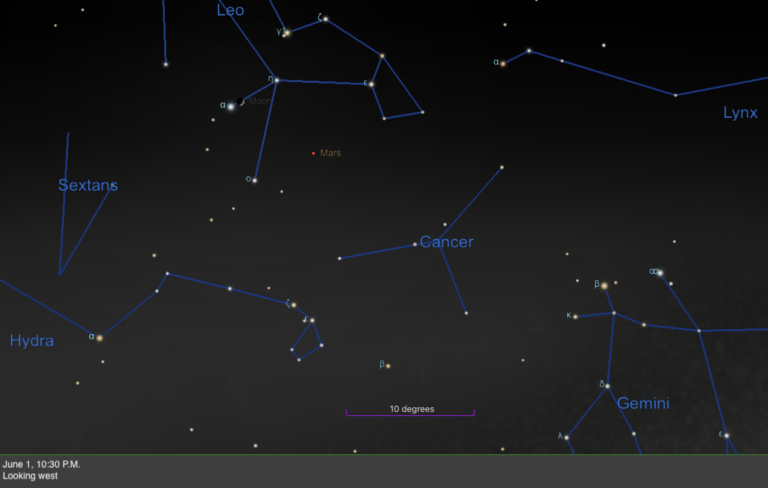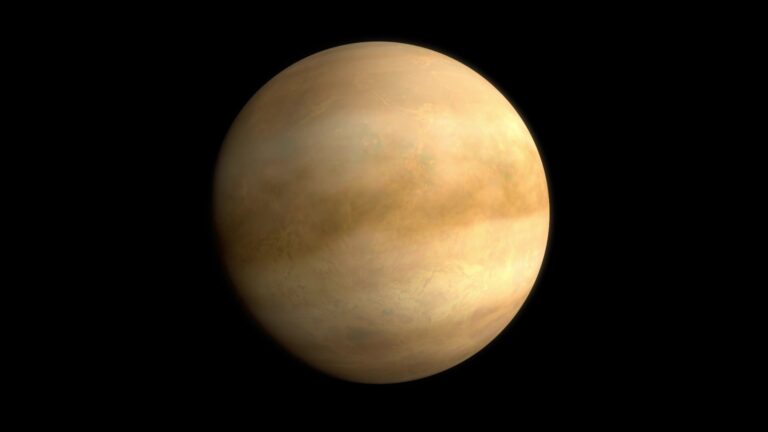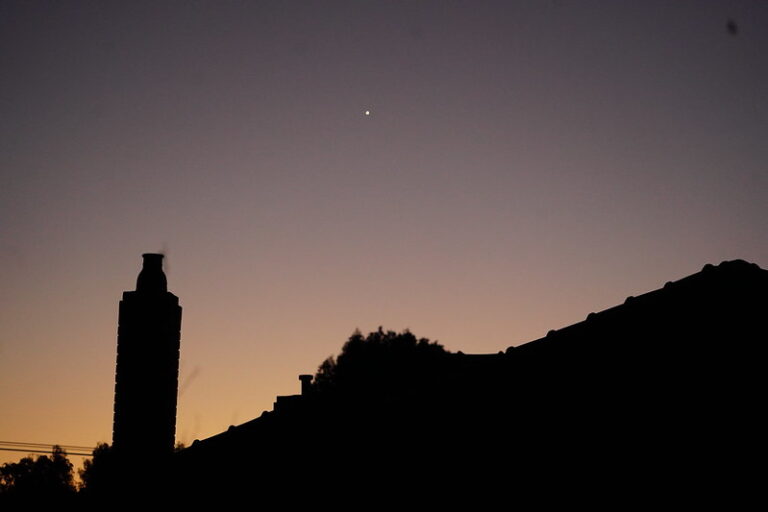Friday, April 8
Marching above the southwestern horizon at sunset is a parade of mythological figures. We’ll start with Taurus the Bull, whose v-shaped face includes his bright red eye, Aldebaran. This red giant star is in the late stages of its life, rendering it cooler and lending it a more orangey hue. When Mars passes near this star later in the year, make sure to compare and contrast their colors.
Southeast of Taurus (to his lower left on the sky) is Orion the Hunter, who is sometimes depicted with a bow aimed at the Bull. Other times, the arc of stars in the western portion of this constellation is drawn to represent a shield. The Hunter is home to one of the easiest-to-spot asterisms in the sky: Orion’s Belt, comprising (from east to west) Alnitak, Alnilam, and Mintaka. These bisect the constellation’s hourglass shape, meant to outline Orion’s body. In particular, one shoulder and knee are both bright and famous: Betelgeuse and Rigel, respectively. The former is a red giant like Aldebaran, while the latter is a bright, hot, blue-white B-type star only some 10 million years old. It will someday cool and expand to become a red giant like Betelgeuse, which by then may be long gone in a supernova explosion.
Finally, let’s look southeast and east of Orion to find his loyal hunting dogs: Canis Major and Canis Minor. Both contain bright stars: Canis Major is home to Sirius, the brightest star in the northern sky. It also contains a double star sometimes called the Winter Albireo: 145 Canis Majoris. Located about 3.5° northeast of Wezen (Delta [δ] CMa), 145 CMa hosts a magnitude 5.0 primary and a magnitude 5.9 secondary just 27″ apart. If you’re familiar with the appearance of Albireo in Cygnus, you may have already guessed: One star is orange while the other is blue-white, providing a lovely color contrast for any viewer.
Not to be left out, the smaller hunting dog contains Procyon, the sky’s 8th-brightest star. That may be in large part because it is close to Earth — some 11 light-years, rendering it the 14th-closest star system to our planet.
Sunrise: 6:33 A.M.
Sunset: 7:32 P.M.
Moonrise: 11:07 A.M.
Moonset: 2:08 A.M.
Moon Phase: Waxing crescent (45%)
*Times for sunrise, sunset, moonrise, and moonset are given in local time from 40° N 90° W. The Moon’s illumination is given at 12 P.M. local time from the same location.
Saturday, April 9
First Quarter Moon occurs at 2:48 A.M. EDT. Well on its way toward Full, our satellite will continue to cast its light throughout the evening sky but sets early in the morning for the next few days if you’re seeking dark conditions to view fainter deep-sky objects.
Mercury reached superior conjunction with the Sun just a week ago, but keen-eyed observers may now catch it in the evening sky. The tiny planet is a bright magnitude –1.8 but sets within 30 minutes of the Sun, so you’ll need to be quick and have a clear view of the western horizon. Some 20 minutes after sunset, the planet is just 3° high in the west and will disappear quickly. If you’re not able to spot it yet, don’t worry — prospects will improve night by night. By the end of this week, Mercury will stand 5° high 30 minutes after sunset, shining a slightly brighter magnitude –1.4 and setting a full hour after the Sun.
Sunrise: 6:31 A.M.
Sunset: 7:33 P.M.
Moonrise: 12:03 A.M.
Moonset: 2:56 A.M.
Moon Phase: Waxing gibbous (54%)
Sunday, April 10
Remember the constellations you enjoyed Friday evening? Let’s return there tonight to zoom in on Taurus, which houses dwarf planet 1 Ceres this month. Tonight, the ruler of the main belt is 1.5° north of the open cluster NGC 1746, providing a stunning double feature. Ceres itself is magnitude 9, while the combined light of the loose cluster’s stars, spread over about 42′, is around magnitude 6. Both are excellent targets for small scopes from the suburbs.
Taurus is a rich constellation with several other nearby open clusters, including NGC 1817 and NGC 1807, visible if you drop south a little less than 9° from Ceres. The Hyades is an excellent naked-eye object, smattered across the broad nose of the Bull and covering some 330′ on the sky. Plus, the ever-famous Pleiades float some 17° west of Ceres, unmissable in northwestern Taurus.
Sunrise: 6:29 A.M.
Sunset: 7:34 P.M.
Moonrise: 1:04 P.M.
Moonset: 3:38 A.M.
Moon Phase: Waxing gibbous (64%)
Monday, April 11
Saturn rises late this morning around 4 A.M. local time. Ninety minutes later — roughly an hour before sunrise — the ringed planet has made it 13° above the horizon and you have a chance of spotting its largest moon, Titan, sitting far west of the rings.
First, let’s find Saturn. It’s located in the constellation Capricornus, floating about 2° northwest of 3rd-magnitude Deneb Algedi. The planet glows at magnitude 0.7 all month, rendering it relatively easy to find, even near the horizon.
Titan glows at magnitude 9. If you remember Ceres last night, this is visible with a small scope even under slightly light-polluted skies. Once you’ve centered on Saturn (and admired its stunning rings, now tilted 13° to our line of sight), look 2.5′ west to find Titan. Although they’ll be difficult to spot with Saturn close to the horizon and sunrise on its way, several other moons also cluster closer to the rings to Saturn’s west. Among them are 10th-magnitude Dione, Rhea, and Tethys. Mimas and Enceladus are also among this group, but at magnitude 13 and 12, respectively, they’re likely invisible to all but imagers with the largest scopes.
Asteroid 2 Pallas, the second asteroid ever discovered and third-largest body in the main belt, reaches conjunction with the Sun at 11 P.M. EDT.
Sunrise: 6:28 A.M.
Sunset: 7:35 P.M.
Moonrise: 2:07 P.M.
Moonset: 4:13 A.M.
Moon Phase: Waxing gibbous (73%)
Tuesday, April 12
It’s another early morning but if you’re willing to wake up a bit before the Sun, you can catch Jupiter and Neptune just 0.1° apart in the predawn sky. Bright Jupiter — shining at magnitude –2.1 — rises about an hour before the Sun, so you’ll need to hit the sweet spot when the planet has had time to climb above the horizon but the sky isn’t too light to see its dimmer partner (Neptune is currently magnitude 7.8).
Wait about 40 to 30 minutes before sunrise and start scanning the eastern sky for Jupiter. You’ll likely see brighter Venus (magnitude –4.3) first, sitting 16.6° west of Jupiter. Once you’ve found the gas giant, zoom in on it with binoculars or a telescope. Not far from Jupiter’s giant 34″-wide disk is tiny, bluish Neptune, which spans a mere 2″ and will look more like a faint, “flat” star southeast of the larger planet. With a telescope, you may even just catch Jupiter’s four Galilean moons: Io sits alone east of the planet, while Europa, Ganymede, and Callisto (from nearest to farthest) sit to the west.
Neptune is currently southeast of Jupiter; the distant ice giant will pass directly south of Jupiter later today at 4 P.M. EDT.
Sunrise: 6:26 A.M.
Sunset: 7:36 P.M.
Moonrise: 3:13 P.M.
Moonset: 4:44 A.M.
Moon Phase: Waxing gibbous (81%)
Wednesday, April 13
The waxing Moon is high in the southeast an hour after sunset, floating near the hind leg of Leo the Lion. The sunlight racing across its surface is approaching the western limb (east on the sky), where the bright crater Aristarchus sits. This 25-mile-wide (40 kilometers) feature is nearly 2 miles (3 km) deep — deeper than the Grand Canyon.
Pull out your scope and focus in here. You’re looking for a diamond-shaped feature just west of Aristarchus, fittingly called the Cobra Head. Curling above and away from it is the deep Vallis Schröteri (Schröter’s Valley), a 6-mile-wide (10 km), 100-mile-long (120 km) channel carved by ancient lava flows.
Southwest of Aristarchus and the Cobra Head is Herodotus, whose floor is much darker than nearby, blazing Aristarchus. Although Herodotus is quite circular, it will appear slightly oval from our point of view here on Earth due to foreshortening.
Sunrise: 6:25 A.M.
Sunset: 7:37 P.M.
Moonrise: 4:19 P.M.
Moonset: 5:11 A.M.
Moon Phase: Waxing gibbous (89%)
Thursday, April 14
With the brightening Moon making deep-sky observing difficult, let’s look toward Ursa Minor to locate a small, lesser-known asterism. The Mini Coathanger, named by Astronomy columnist Phil Harrington, is a downsized version of the larger so-called Coathanger in Vulpecula.
To find it, you simply need to first locate 4th-magnitude Epsilon (ϵ) Ursae Minoris, the third star from the end of the Little Dipper’s handle (the end star is Polaris, the North Star). Then, shift about 2° southwest of Epsilon with binoculars or a telescope, and you’ll land on this Mini Coathanger, made up of about 10 stars. The asterism’s flat base is about 17′ across, while the height of its “hanger” is about half that (9′). Its stars range from roughly 10th to 11th magnitude, so take your time while scanning this region until you spot it.
Sunrise: 6:23 A.M.
Sunset: 7:38 P.M.
Moonrise: 5:27 P.M.
Moonset: 5:37 A.M.
Moon Phase: Waxing gibbous (95%)
Friday, April 15
The now nearly Full Moon in the sky limits our observing prospects. But there’s one famous star we can focus on tonight: Algol, sometimes called the Demon Star, in Perseus.
Also cataloged as Beta (β) Persei, Algol is a Sun-like star with about 3 to 4 times the mass of our own star, still fusing hydrogen in its core. But unlike our Sun, Algol changes brightness regularly, dipping from magnitude 2.1 to magnitude 3.4 every 2.867 days. That’s a big enough change to notice by eye — you can do so by comparing the brightness of Algol with nearby Mirfak, the Hero’s magnitude 1.8 alpha star.
What’s going on? Algol is an eclipsing binary system, in which a companion star in a tight orbit passes in front of the primary from our point of view every few days. When the dimmer star blocks its brighter counterpart, Algol appears to plummet in brightness for the few hours it takes for the eclipse to elapse. Careful observation has shown there is also a secondary dip in brightness of 0.1 magnitude or so, which occurs 30 hours after the primary eclipse. This is when the brighter star passes in front of the fainter star, blocking its light and slightly dimming the entire system from our point of view.
Sunrise: 6:22 A.M.
Sunset: 7:39 P.M.
Moonrise: 6:36 P.M.
Moonset: 6:01 A.M.
Moon Phase: Waxing gibbous (98%)

